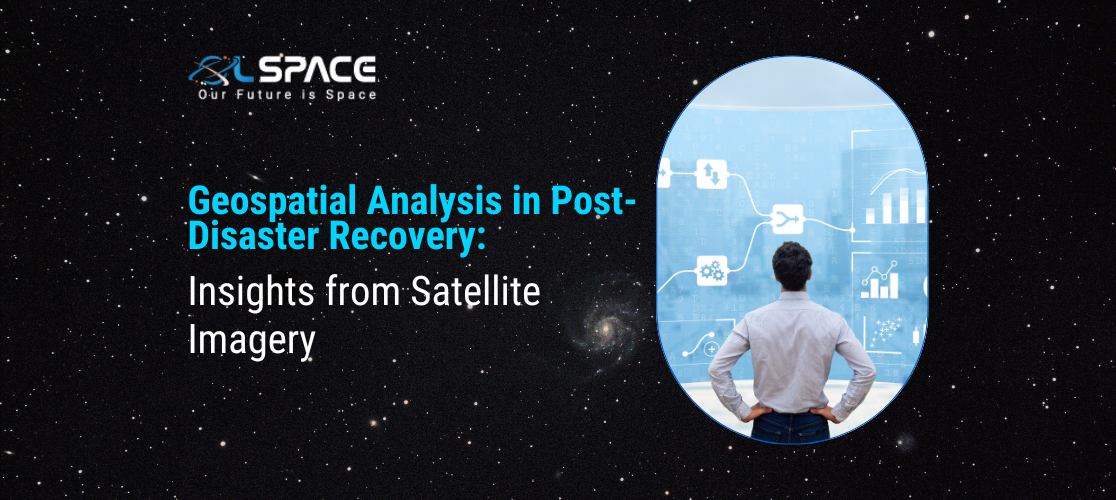29 August 2023
Geospatial Analysis in Post-Disaster Recovery: Insights from Satellite Imagery

Natural disasters such as earthquakes, floods, hurricanes, and wildfires can cause extensive damage to communities, infrastructure, and the environment. In the aftermath of such events, effective post-disaster recovery and reconstruction are crucial for rebuilding lives and restoring normalcy. Geospatial analysis, powered by satellite imagery and advanced technologies, has emerged as a powerful tool to provide valuable insights for informed decision-making during the post-disaster recovery phase. In this article, we will explore how geospatial analysis using satellite imagery aids in post-disaster recovery efforts.
Geospatial Analysis and Satellite Imagery: Geospatial analysis involves the examination of geographic data to uncover patterns, trends, and relationships. Satellite imagery, captured from space, provides high-resolution images of disaster-stricken areas, offering critical information for recovery planning.
Damage Assessment: Satellite imagery enables rapid and accurate assessment of the extent of damage. Comparing pre-disaster and post-disaster images can help identify areas severely affected by the disaster.
Infrastructure Identification: Geospatial analysis helps identify damaged infrastructure such as roads, bridges, and buildings. This information guides resource allocation and prioritisation for repairs.
Population Density and Displacement: Satellite imagery can help estimate population density and identify displaced communities. This aids in planning for humanitarian aid distribution and temporary housing.
Environmental Impact Assessment: Geospatial analysis reveals changes in the natural environment caused by disasters, such as landslides or coastal erosion. This information informs environmental protection and restoration efforts.
Access and Logistics Planning: Satellite imagery provides insights into accessible routes and logistical challenges. This assists in planning the delivery of supplies, medical aid, and equipment to affected areas.
Damage Hotspots and Vulnerability Mapping: By overlaying satellite images with data on vulnerability factors, geospatial analysis helps identify areas prone to further damage and aids in targeting resources effectively.
Reconstruction Planning: Post-disaster recovery requires strategic reconstruction planning. Geospatial analysis helps in identifying suitable locations for rebuilding and determining zoning regulations.
Real-Time Monitoring: Continuous satellite monitoring provides real-time data on changing conditions, enabling rapid response to evolving situations and ensuring effective recovery efforts.
Collaboration and Decision-Making: Geospatial analysis tools facilitate collaboration among disaster response teams, government agencies, NGOs, and local communities. The data-driven insights aid in evidence-based decision-making.
Conclusion:
Geospatial analysis using satellite imagery has revolutionised post-disaster recovery efforts by providing timely and accurate insights. The ability to assess damage, identify critical infrastructure needs, plan access routes, and understand environmental impacts is instrumental in ensuring efficient and effective recovery. As technology continues to advance, the integration of geospatial analysis with disaster recovery efforts will play a pivotal role in enhancing preparedness, response, and resilience against the challenges posed by natural disasters. By harnessing the power of satellite imagery and geospatial analysis, communities can rebuild stronger, more resilient, and better-prepared for future events.
